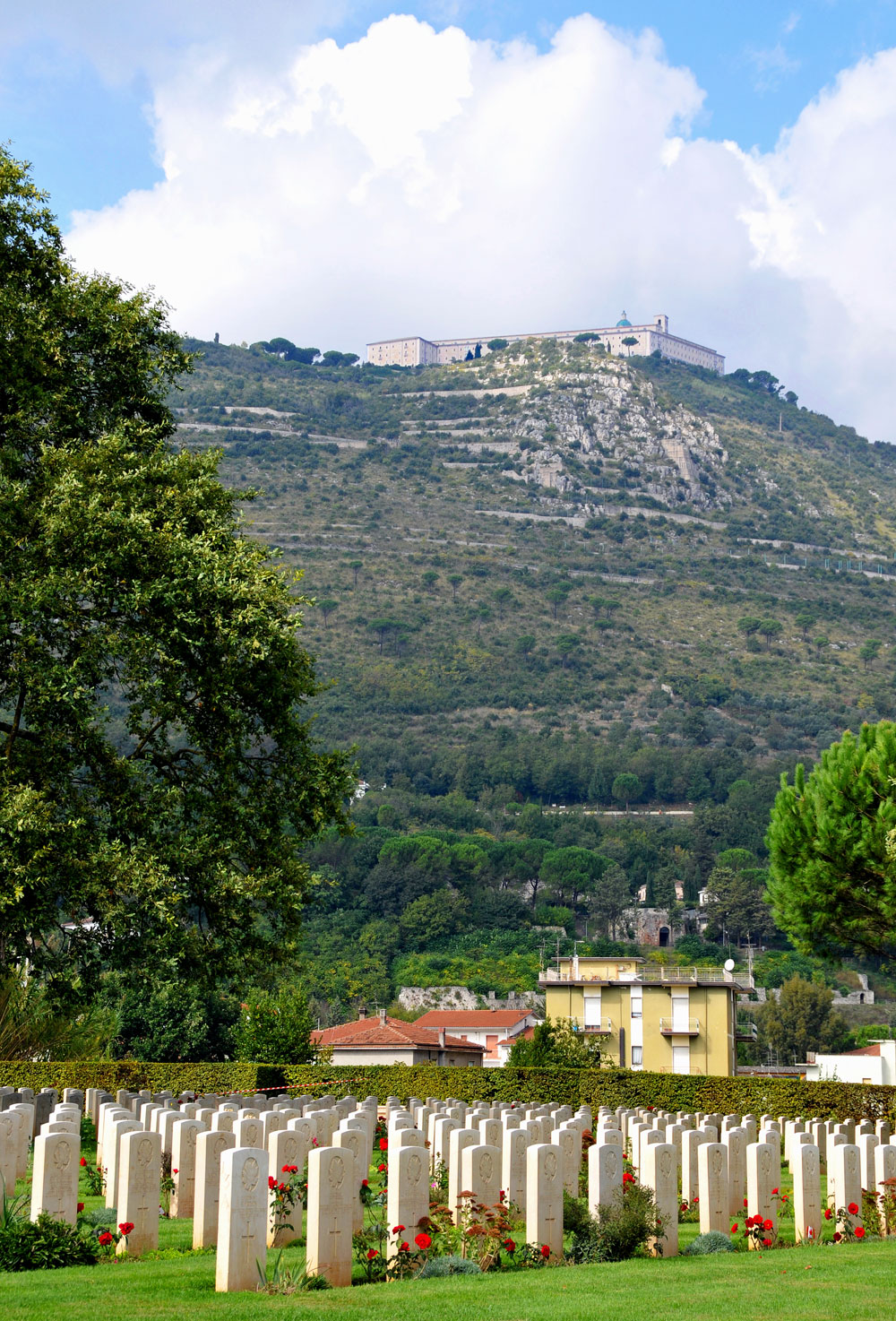ORAL HISTORY CLIPS
Young Oak Kim [interview 047a]
Starts on Tape Four, between 10 and 12 minute marks
TRANSCRIPT
YOUNG OAK KIM:
When we went into Cassino, I think the attack, if I remember, started on the night of the 24th or the 25th of January. From where we were, down to the river, Rapido River, was very close to seven miles. Now, when we got down to the flat part, the Germans had leveled everything. Every building, every tree was cut. There was nothing. The cut trees were piled out in the flat spot between where there was a irrigation ditch in the road, and the river. That part was flooded.The Germans stored up—water up in a temporary dam, and once they knew we were going to attack, then the dam was broken so that whole flat area was flooded. I guess the width of that flat area was a couple of hundred yards. The irrigation channel I’m talking about that we had to cross, was a good, oh, I’d say 7 feet or 7-1/2 feet. I think, you know, if you took a running jump, anybody could jump over. But if you had, you know, soggy wet clothes on, and all your equipment and your weapons, you couldn’t jump that for love or money, see. That thing was about eight feet deep. The water in it was ice cold. You’d freeze to death if you stayed in it. And it was running at probably 20, 25 miles an hour. So it’s almost sure death if you fell in there.Our attack was launched at midnight. We didn’t know that irrigation was there; we had some idea. I went out there on a patrol and found it, and one of our other patrols was captured in that very vicinity. So we came with some temporary things, you know, planks to cross it, but nothing provided by the engineers or anybody else. Once you cross that, you were almost knee-deep in mud. Prior to flooding it, the Germans buried thousands of mines in that area and thousands of flares so that the Germans would know you’re coming no matter what. It’s almost impossible to avoid all of those things.We attacked with C Company on the left and A Company on the right. Back then, I knew very little about it, and the artillery and everything was controlled by Regiment and Division. And they planned of rolling barrage, the kind they used in World War I. That the barrage started at a certain time and it would roll forward at a given rate, and it was up to the infantry to keep up with it. But of course the barrage cared less about the irrigation ditch, the river, the barbed wire, the minefields and everything, and so the barrage is way over the mountains, before we even cross the irrigation ditch.
Young Oak Kim [interview 047a]
Starts on Tape Four, between 16 and 18 minute marks
YOUNG OAK KIM:
I think, very close to dawn, both C and A Company had breached the wall that—in this particular area, the Rapido River had been walled in on both sides and it was concrete. And so now you’re facing a—now, a major obstacle. I can’t remember exactly, but I think from reports that were coming back, that river was a good 15, 20 yards wide. It was a good 10 or 12 yards down, and then on the far side, it was higher, and then on that side, you had mines, barbed wire and everything ’cause there was a road. Now, across the road is where the hill started. And the Germans were dug in on that hill, and they were dug into—the hill was solid rock. And so, what the German engineering companies had done, they come out and air hammered these bunkers into solid rock, and the Germans were sitting in there comfortably with their machine guns, available fire, and everything else, and we’re sitting out there. And, of course, they had machine guns further up all the way up the hill, as well as other things. And, of course, they were firing at us with mortars. And that’s the first time we ran into the…we call the “screaming meemies.” Those are the rockets that fire and come in in clusters. And their artillery there was enormous in size.







